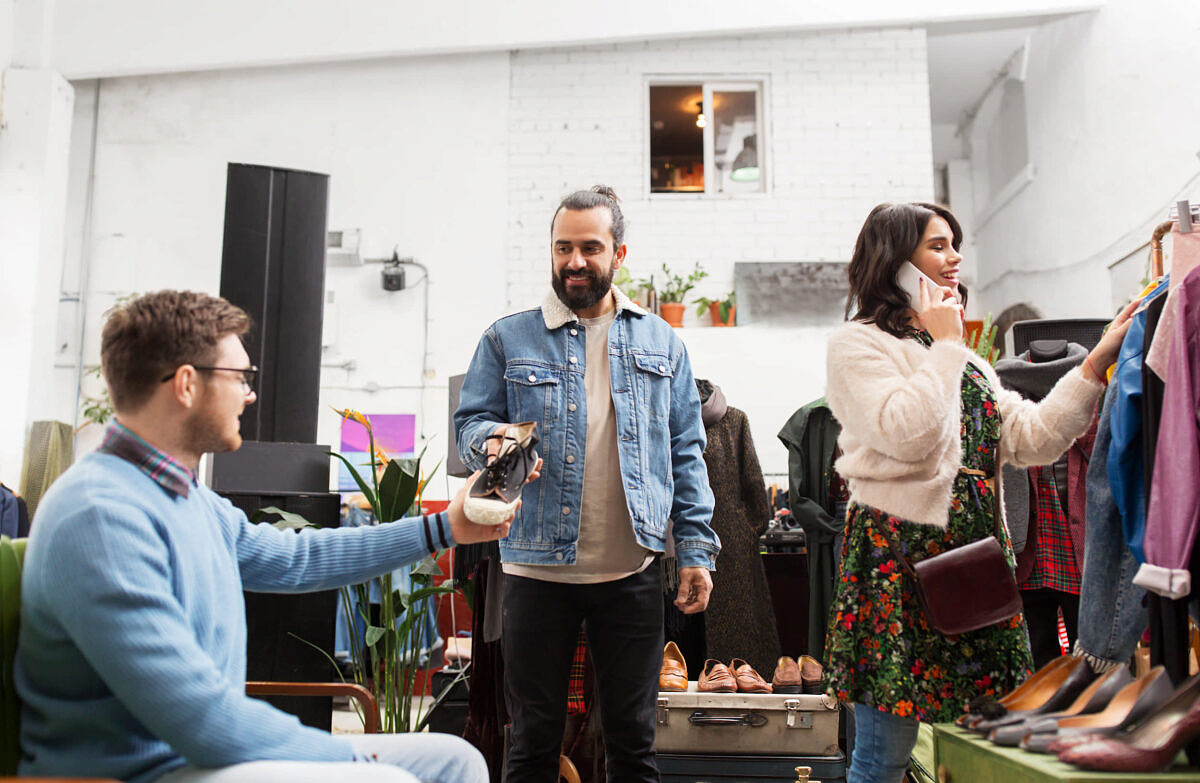Sustainable consumption: exploring the second-hand market and sharing economy
Two commercial models have caught on in recent years: the sharing economy and second-hand market combine sustainability with profits, thus serving as perfect examples of modern business.

Sustainable consumption is becoming the new norm
Whether it’s the weekly grocery shopping, the yearly Christmas shopping, or investing in a new laptop every couple of years, more and more of us are considering or being driven by sustainability when buying products. On the back of this trend, dedicated business models and market systems have emerged, all falling under the umbrella term of “sustainable consumption”.
The second-hand craze in fashion and elsewhere
In recent years, second-hand fashion stores have taken over the centers of many European cities, with their range of items catering to a broad group of consumers. Second-hand fashion is often cheaper than buying new garments, it mirrors the ongoing vintage trend, and it doesn’t generate any new production demand. What’s more, these stores usually offer a special shopping experience both online and offline, since they have a wide, diverse selection for customers to discover and show off their own unique style. The fashion industry is definitely dominating the second-hand market and highlights what second-hand is all about today: sustainable consumption doesn’t have to be boring!
It doesn’t stop at fashion, though: furniture, technology, and music are also seeing a thriving second-hand community. The majority of these transactions are effectively still taking place C2C between private individuals, with the big market players “merely” providing the necessary digital platforms. Nevertheless, brands and retailers would be wise to tap into the market, since a clear trend with lots of growth potential is developing here.
Businesses should learn from the second-hand trend for their own (online) stores by diversifying their range and making it climate-neutral.
End-to-end sustainability: keeping tabs on supply chains
As the demand for sustainable products rises, consumer expectations are becoming more exacting. Sustainable consumption no longer just refers to the final product, but instead encompasses the entire production and delivery process. That entails more than environmental sustainability – for example, the social implications for factory workers in the fashion industry are increasingly in the public eye.
To win over the new socially aware, environmentally conscious, and sustainably minded generation of customers, companies and brands need to invest in a sustainable production strategy.
Sharing economy: renting an appliance to counteract overproduction
Buying a product you’re only going to use once or twice is hardly what you’d call a good investment. Many DIYers will have found themselves in this situation when forced to buy a special-purpose machine just for that one job in the home – that was until the sharing economy came along. Back in the day, you may have gone and borrowed an appliance from someone handy in your family or friendship circle, but now the DIY store down the road fulfills the same purpose. The sharing economy is all about renting an appliance instead of buying it new. Sharing home DIY appliances is already a popular practice, but many technical products can now be borrowed as well, allowing customers to rent and use gadgets that they rarely need. The rental appliances are also ideal for trying out a product or brand in an everyday context.
The sharing economy is underpinned by two core values:
- Sustainability: Sharing products can help protect the environment, especially when it comes to electronic appliances, since their production requires a lot of raw materials.
- Cost: It’s often not economical to buy a product you’re only going to use every couple of years. Users are better off occasionally borrowing an expensive appliance instead.
User-friendly, easy-to-maintain, and durable appliances are ideal products for a sharing economy. Brands that embody sustainability and reliability will attract the new big wave of environmentally conscious buyers.
Do good and talk about it: green marketing is the key to sustainable consumption
Manufacturers aren’t the only ones who need to know their target group inside out; the same also applies to marketers in particular. Customers are increasingly valuing sustainable consumption, which in turn is significantly changing their behavior. Sales strategies have to be precisely tailored, while acknowledging that second-hand items aren’t inferior and the sharing economy doesn’t mean deciding against a product, but rather that consumers have developed a new relationship with products.
If companies want to keep up with the competition, they need to take a holistic approach to sustainability – and actually communicate it. Only by embracing green marketing, i.e. advertising their own sustainability, will they be recognized as a part of the green economy, allowing them to harness these new market segments.





